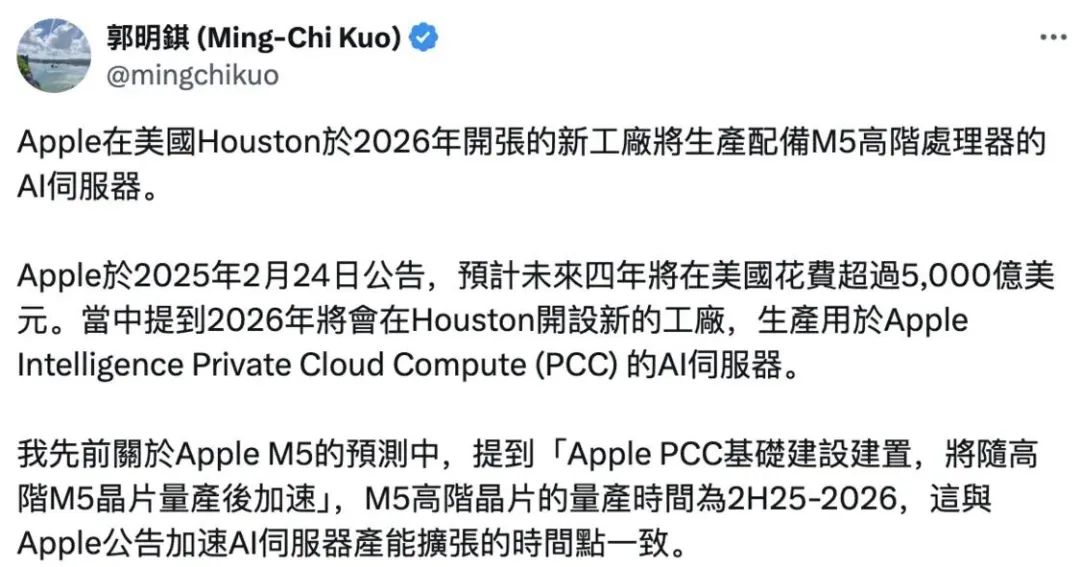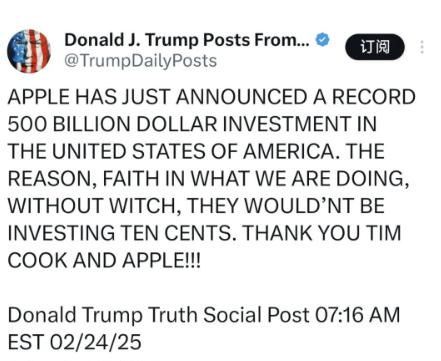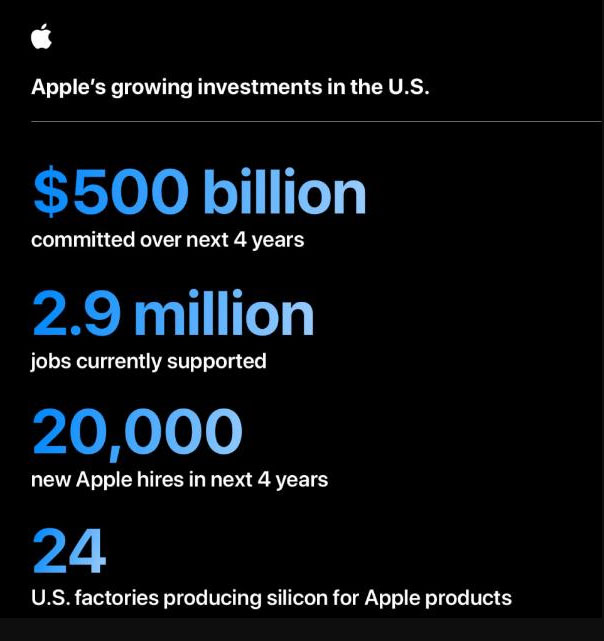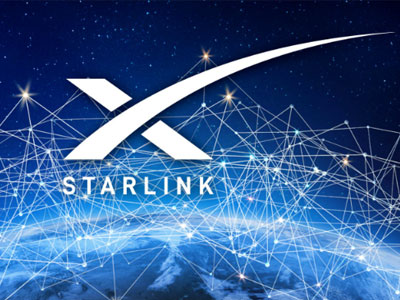Apple plans to invest $500 billion in the United States to build a chip factory.On February 25, well-known analyst Ming-Chi Kuo wrote that Apple plans to build a chip factory in Houston, Texas, to produce AI servers equipped with high-performance M5 chips and provide assistance for "Apple Intelligence".

It is reported that the factory will cooperate with Foxconn. Foxconn has already built a factory in Houston and purchased land for new projects last year. After the new factory is put into production, these servers will be equipped with high-end M5 chips produced by TSMC.
And these chips are likely to be produced by TSMC wafer factories in the United States. At the TSMC wafer factory installation celebration in Phoenix three years ago, TSMC announced that the second wafer factory in the United States will produce more advanced 3nm process, and the time node is also very consistent with the production time of Apple's chip factory.
That day, Biden excitedly announced on the spot: "American manufacturing is back."
The AI servers produced in the United States use high-end chips produced in the United States, which sounds full of gimmicks.

Apple bets 500 billion
Since Trump won the presidential election, American technology giants have collectively started crazy investment plans, and Apple is no exception.
In addition to the factory mentioned at the beginning, on the 70th anniversary of the birth of Apple founder Steve Jobs, the technology giant announced that it would invest 500 billion US dollars in the country in the next four years, and it is expected to add about 20,000 jobs and 24 factories.

In addition, Apple also plans to set up an academy in Michigan to cultivate the next generation of American manufacturing talents, and increase its R&D investment in the United States to support the development of cutting-edge fields such as chips.
Finally, in terms of R&D and content creation, this huge investment may also include spending on R&D, data centers, supply chain support, training, and production of original content (movies and shows) for Apple TV+ services.
Cook said: We are confident in the future of American innovation and are proud to consolidate our long-term investment in the United States through this $500 billion commitment. From doubling the Advanced Manufacturing Fund to building an advanced technology factory in Texas, we are pleased to expand our support for American manufacturing.
Simply put, this huge investment can be seen as a positive response to Trump's "Made in America" policy, and it also reflects Apple's determination in the field of AI.
Half-avoiding the "calculation" of politics
In fact, just a week ago, Trump revealed in an interview at Mar-a-Lago that he planned to impose a tariff of about 25% on imported cars, semiconductors and drugs, and the specific policy would be officially announced as early as April 2.
At this time, Apple launched a huge investment plan, which is obviously a response to Trump's policy.
This is not the first time Apple has "cooperated". As early as Trump's first term, Apple promised to invest $350 billion in five years, thus avoiding iPhone tariffs.
Today, facing a new round of trade pressure, Apple once again chooses to "open the way with money", which of course also hopes to exchange for policy exemptions and the label of "Made in America".
From another perspective, the current semiconductor imports in the United States account for more than 30%, and for companies like Apple that rely on the supply chain, the rise in chip costs is even more sensitive.
Making plans in advance to move the supply chain back to the United States is not only more conducive to long-term development, but also allows investors to maintain confidence.
Interestingly, after the news was announced, Apple's US stocks fell more than 1% before the market (up after the market).
Obviously, with the examples of TSMC's US factories and Intel's US factories, investors are also worried about whether the $500 billion investment will drag down key indicators such as profit margins.
This huge investment, which must cater to politics and lay out the future, can now be regarded as a "big gamble."




